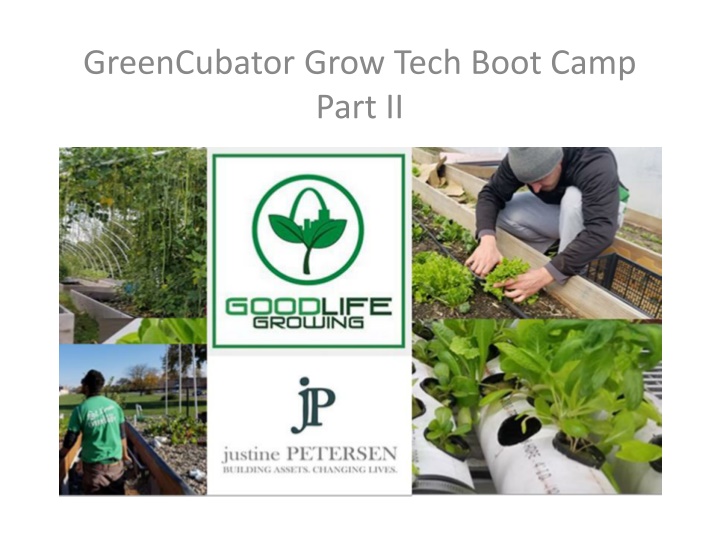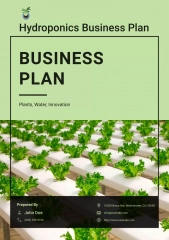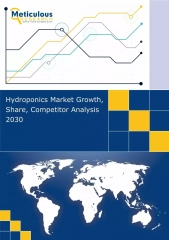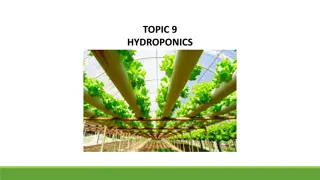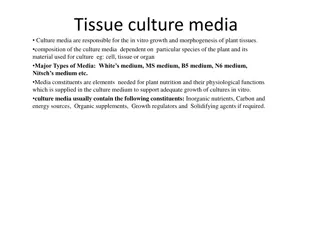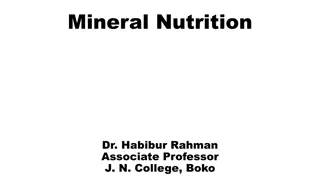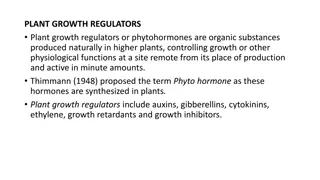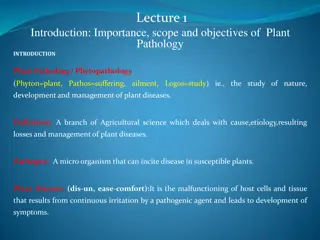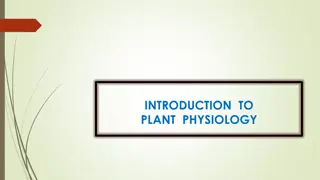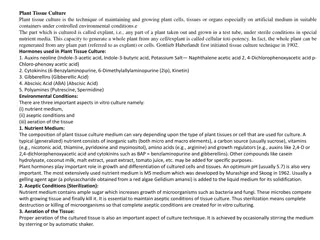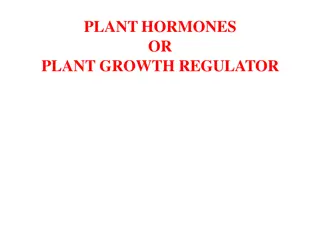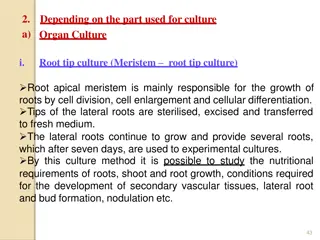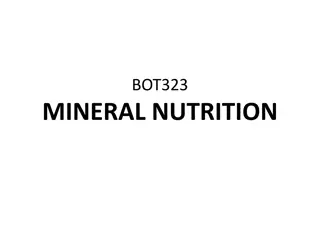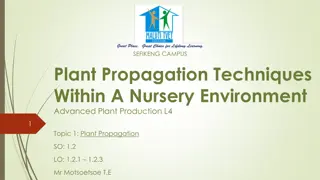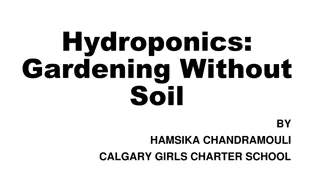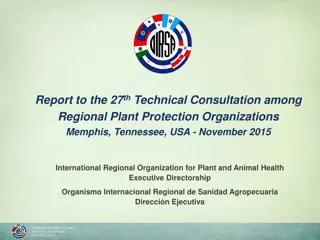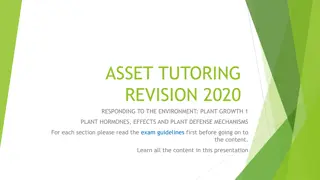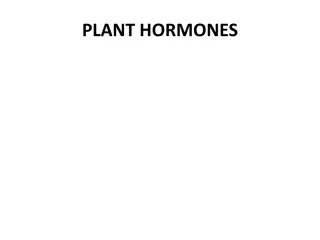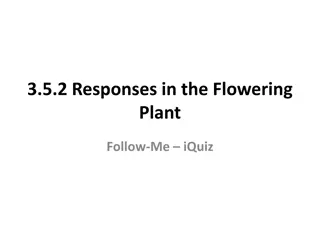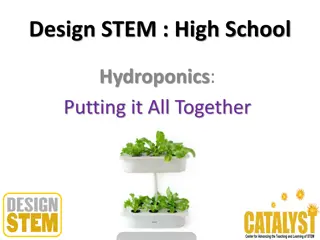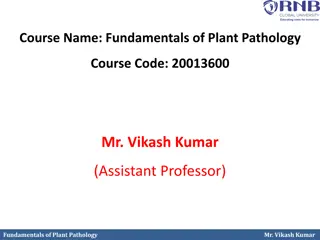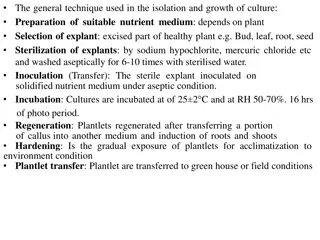Hydroponics: Revolutionizing Plant Growth Techniques
Explore the fascinating world of hydroponics, a soil-less gardening method with roots dating back thousands of years. Discover the benefits of hydroponic systems in terms of faster plant growth, increased yields, and environmental sustainability. Dive into the various grow media options available for hydroponic gardening, offering insights into pH levels, cost-effectiveness, and lifespan. Uncover the historical evolution of hydroponics and its potential to address modern agricultural challenges.
Download Presentation

Please find below an Image/Link to download the presentation.
The content on the website is provided AS IS for your information and personal use only. It may not be sold, licensed, or shared on other websites without obtaining consent from the author.If you encounter any issues during the download, it is possible that the publisher has removed the file from their server.
You are allowed to download the files provided on this website for personal or commercial use, subject to the condition that they are used lawfully. All files are the property of their respective owners.
The content on the website is provided AS IS for your information and personal use only. It may not be sold, licensed, or shared on other websites without obtaining consent from the author.
E N D
Presentation Transcript
GreenCubator Grow Tech Boot Camp Part II
The History of Hydroponics The word hydroponics comes from two Greek words, "hydro" meaning water and "ponics" meaning labor. The concept of soil less gardening or hydroponics has been around for thousands of years. The hanging Gardens of Babylon and The Floating Gardens of China are two of the earliest examples of hydroponics. Scientists started experimenting with soil less gardening around 1950. Since then other countries, such as Holland, Germany, and Australia have used hydroponics for crop production with amazing results.
The Benefits of Hydroponics Hydroponics is proved to have several advantages over soil gardening. The growth rate on a hydroponic plant is 30-50 percent faster than a soil plant, grown under the same conditions. The yield of the plant is also greater. The extra oxygen in the hydroponic growing mediums helps to stimulate root growth. Plants with ample oxygen in the root system also absorb nutrients faster. The nutrients in a hydroponic system are mixed with the water and sent directly to the root system. The plant does not have to search in the soil for the nutrients that it requires. Those nutrients are being delivered to the plant several times per day. The hydroponic plant requires very little energy to find and break down food. The plant then uses this saved energy to grow faster and to produce more fruit. Hydroponic plants also have fewer problems with bug infestations, funguses and disease. In general, plants grown hydroponically are healthier and happier plants. Hydroponic gardening also offers several benefits to our environment. Hydroponic gardening uses considerably less water than soil gardening, because of the constant reuse of the nutrient solutions. Due to lack of necessity, fewer pesticides are used on hydroponic crops. Since hydroponic gardening systems use no topsoil, topsoil erosion isn't even an issue. Although, if agricultural trends continue to erode topsoil and waste water, hydroponics may soon be our only solution.
Grow Media Cost pH Lifespan Rockwool Vermiculite Growstone Hydroponic Substrate Pine shavings Hydrotron/Leca Clay Oasis Cubes Floral Foam Water absorbing crystals/polymers Coco Fiber & Chips Sand Poly (Polyurethane) foam insulation River Rock Rice Hulls Perlite Pine Bark Starter Plugs Slotted Net Pot/cups Medium Medium Medium Low High Medium Low Low Low/Medium Low Low Low Low Low Low Low Low Basic Basic Acidic Neutral Neutral Neutral Neutral Neutral Neutral Neutral Neutral Neutral/Basic Neutral/Acidic Neutral Neutral/Acidic - - Renewable Reusable Reusable Short Reusable Reusable Reusable Resuable Short Reusable Short Reusable Short Reusable Short Reusable Reusable Ponic Focused Growing Mediums
Growing Mediums The purpose of a growing medium is to aerate and support the root system of the plant and to channel the water and nutrients. Different growing mediums work well in different types of hydroponic systems. L.E.C.A (Lightweight Expanded Clay Aggregate) A fast draining medium, such as Hydrocorn or expanded shale works well in an ebb and flow type system. Hydrocorn is a light expanded clay aggregate. Light, airy type of growing medium that allows plenty of oxygen to penetrate the plant's root system. Both types of grow rocks can be reused, although the shale has more of a tendency to break down and may not last as long as the Hydrocorn. These grow rocks are very stable and rarely effect the pH of the nutrient solution.
Rockwool has become an extremely popular growing medium. It is produced from volcanic rock and limestone. These components are melted at temperatures of 2500 degrees and higher. The molten solution is poured over a spinning cylinder, comparable to the way cotton candy is made, then pressed into identical sheets, blocks or cubes. Since Rockwool holds 10-14 times as much water as soil and retains 20 percent air it can be used in just about any hydroponic system. Although, growers must be careful of the pH, since Rockwool has a pH of 7.8 it can raise the pH of the nutrient solution. Rockwool cannot be used indefinitely and most gardeners only get one use per cube. It is also commonly used for propagation. Other commonly used growing mediums are Perlite, Vermiculite and different grades of Sand. These three mediums are stable and rarely effect the pH of the nutrient solution. Although, they tend to hold too much moisture and should be used with plants that are tolerant to these conditions. Perlite, vermiculite and sands are very inexpensive options, and work charitably in wick systems, although they are not the most effective growing mediums.
Good Life In-House Ponic Medium Focused on Sustainability, Reusability, and Affordability. Built for Urban Farmers Custom Blend Compost + L.E.C.A + Reusable 100% Recycled Plastic Netted Pots = Super Seed Starter for all Ponic Medium Uses Adds Nutrients to Growing Media by making natural Compost Tea during the growing process
Nutrients Most of the principles that apply to soil fertilizers also apply to hydroponic fertilizers, or nutrient solutions. A hydroponic nutrient solution contains all the elements that the plant normally would get from the soil. Can be purchased at a hydroponic supply store or made at home for experienced hydroponic growers. Most are highly concentrated, using 2 to 4 teaspoons per gallon of water. They come in liquid mixes or powered mixes, usually with at least two different containers, one for grow and one for bloom. The liquids are the slightly more expensive and the easiest to use. They dissolve quickly and completely into the reservoir and often have an added pH buffer. The powered varieties are inexpensive and require a little more attention. They need to be mixed much more thoroughly and often don't dissolve completely into the reservoir. Most do not have a pH buffer.
pH (A critical cornerstone of all Ponic Medium Growing) Most plants can grow hydroponically within a pH range of 5.8 to 6.8, 6.3 is considered optimal. The pH in a hydroponic system is much easier to check than the pH of soil. Many hardware, pet, and hydroponic supply stores sell pH-testing kits. They range in price from $4.00 to about $15.00, depending on the range and type of test you prefer. Testing pH is easy and essential in a hydroponics system. If the pH is too high or too low the plant will not be able to absorb certain nutrients and will show signs of deficiencies. pH should be checked once a week. Easy to adjust by adding small amounts of soluble Potash to raise pH, or phosphoric acid to lower pH. There are also several pH meters available. These give a digital reading of the pH in the system. The pH meter cost around $100 and are not necessary in most cases.
There are 6 basic types of hydroponic systems: Wick, Water Culture, Ebb and Flow (Flood & Drain), Drip (recovery or non-recovery), N.F.T. (Nutrient Film Technique), & Aeroponic. There are hundreds of variations on these basic types of systems, but all hydroponic methods are a variation (or combination) of these six.
Aquaponics Crash Course
Aquaponics Crash Course Combination of hydroponics and aquaculture Closed loop cycle No chemicals or pesticides Indoor and outdoor growing capabilities
Can be run on solar power Less use of inputs (fertilizers and nutrients) Potential for 365 24/7 farming No reservoir dumping like with traditional Hydroponics Cost savings over time as labor and purchasing inputs decrease Natural source of protein as fish are edible Additional Revenue Stream Perpetual Supply of Macro and Micro- Nutrients Wide variety of possible produce Aquaponics Crash Course
INDOOR AQUAPONICS IS THE FUTURE! LETS CATCH UP TO THE REST OF THE WORLD AND GET AHEAD IN ST. LOUIS.
WE ARE READY TO LAUNCH A NEW DIVISION FOCUSED ON BOTH INDOOR PRODUCTION OF VEGETABLES AND SALES OF A SCALABLE, VERTICAL, HYBRID AQUPONIC RACK
GLG Customized SCALABLE HYBRID MODEL Water-cooled LED light kit 300-500 gallon Fish Tank for perpetual nutrient dosing Shallow Water Culture (SWC) Grow Trays Ebb & Flow Bio-Filter for deep rooted plants and converting ammonia to nitrogen Automatic Bell Siphon for gravity flow drainage (no sump pump) This modular, vertical, grow rack system is designed to provide an efficient, cost effective, model to take commercial indoor agriculture to scale; while not copying flawed designs from the past. As it stands, most indoor commercial farms rely on massive, interconnected, eco- systems where if one small component fails an entire crop can be lost. By building a lot of these smaller systems next to each other we get the same large yields per square foot while creating redundancies in the event something unpredictable goes wrong.
A Brief Intro into US Agriculture 1776 1800 During the latter part of the 18th century, farmers relied on oxen and horses to power crude wooden plowss. All sowing was accomplished using a hand-held hoe, reaping of hay and grain with a sickle, and threshing with a flail. But in the 1790s, the horse-drawn cradle and scythe were introduced, the first of several inventions. 16th century Spanish cattle introduced into the Southwest 17th century Small land grants commonly made to individual settlers; large tracts often granted to well- connected colonists 1619 First African slaves brought to Virginia; by 1700, slaves were displacing southern indentured servants 17th and 18th centuries All forms of domestic livestock, except turkeys, were imported at some time 17th and 18th centuries Crops borrowed from Indians included maize, sweet potatoes, tomatoes, pumpkins, gourds, squashes, watermelons, beans, grapes, berries, pecans, black walnuts, peanuts, maple sugar, tobacco, and cotton; white potatoes indigenous to South America 17th and 18th centuries New U.S. crops from Europe included clover, alfalfa, timothy, small grains, and fruits and vegetables 17th and 18th centuries African slaves introduced grain and sweet sorghum, melons, okra, and peanuts 18th century English farmers settled in New England villages; Dutch, German, Swedish, Scotch-Irish, and English farmers settled on isolated Middle Colony farmsteads; English and some French farmers settled on plantations in Tidewater and on isolated Southern Colony farmsteads in Piedmont; Spanish immigrants, mostly lower-middle-class and indentured servants, settled the Southwest and California.
18th centuryTobacco was the chief cash crop of the South 18th century Ideas of progress, human perfectibility, rationality, and scientific improvement flourished in the New World 18th century Small family farms predominated, except for plantations in southern coastal areas; housing ranged from crude log cabins to substantial frame, brick, or stone houses; farm families manufactured many necessities 1776 Continental Congress offered land grants for service in the Continental Army 1785, 1787 Ordinances of 1785 and 1787 provided for survey, sale, and government of northwestern lands 1790 Total population: 3,929,214, Farmers made up about 90% of labor force 1790 The U.S. area settled extended westward an average of 255 miles; parts of the frontier crossed the Appalachians 1790-1830 Sparse immigration into the United States, mostly from the British Isles 1793 First Merino sheep imported 1793 Invention of cotton gin 1794 Thomas Jefferson's moldboard of least resistance tested 1794 Lancaster Turnpike opened, first successful toll road 1795 1815 The sheep industry in New England was greatly emphasized 1796 Public Land Act of 1796 authorized Federal land sales to the public in minimum 640- acre plots at $2 per acre of credit 1797 Charles Newbold patented first cast-iron plow
Global Food Issues 870 Million People are malnourished Extreme Global Droughts and Flooding Increased Population Food consumption outgrowing food production Cost of food increasing Less land for farming Fewer Farmers Overdependence on Fossil Fuels *United Nations Statistics 2012
Local Food Issues Rising Prices Limited Options as Small Farmers continue to go out of business Non-labeled produce Food Deserts Limited Access and Knowledge Missouri exports 90+% of the food grown in state Missouri imports 90+% of the food consumed Hungry children and families Dependency on Processed, Convenient Foods
Why We Use Pesticides Pesticides are used to control various pests and disease carriers, such as mosquitoes, ticks, rats and mice. Pesticides are used in agriculture to control weeds, insect infestation and diseases. There are many different types of pesticides; each is meant to be effective against specific pests. Some examples include: Algaecides to kill and/or slowing the growth of algae. Antimicrobials to control germs and microbes such as bacteria and viruses. Disinfectants to control germs and microbes such as bacteria and viruses. Fungicides to control fungal problems like molds, mildew, and rust. Herbicides to kill or inhibit the growth of unwanted plants, also known as weeds. Insecticides to control insects. Insect Growth Regulators to disrupt the growth and reproduction of insects. Rodenticides to kills rodents like mice, rats, and gophers. Wood Preservatives to make wood resistant to insects, fungus and other pests.
What You Should Do All illegal pesticides products should be avoided. You have no way of knowing how dangerous an unregistered pesticide is because it has not been tested for safety. Simple rules to follow when buying a pesticide: Look for an EPA registration number on the pesticide's container. This number tells you that EPA has examined the safety testing. Look for a list of the active ingredients on the label. Any product registered with EPA must state the active ingredients on the label. Trust your instincts. Shop for pesticides only in stores you know and trust. Don t buy products that are packed or wrapped suspiciously. Contact the EPA Regional Pesticide unit for your location or call the National Pesticide Information Center Exit at 1-800-858-7378. We will answer any questions you might have about pesticides you are thinking of using in your home. Be aware that some pesticides are not meant to be used in the home (like farm pesticides). The product label will tell you where the product can be used. Always read the label first. EPA must approve all pesticide labels before products can be sold. If you follow all the label directions, you will reduce your risk of harming yourself, your pets, and the environment. The label provides important information you need to protect yourself and your family.
OMRI certified pesticides and IPM We focus on organic pesticides, most of which are OMRI (Organic Materials Review Institute) certified. This is primarily because most commercial aquaponic producers grow organic produce and use pesticides permissible under USDA Organic Standards. Before we begin to discuss individual brands and products, I would first encourage you to do some research on integrated pest management, commonly referred to as IPM. IPM is a pest control strategy that incorporates cultural, mechanical, chemical, and biological pest control into a larger context of economics, environment and human health. The rules of IPM promote a holistic view of pest control using compatible controls and eliminating unnecessary spraying. https://www.youtube.com/watch?v=xluhQSDLwUU#action=share
